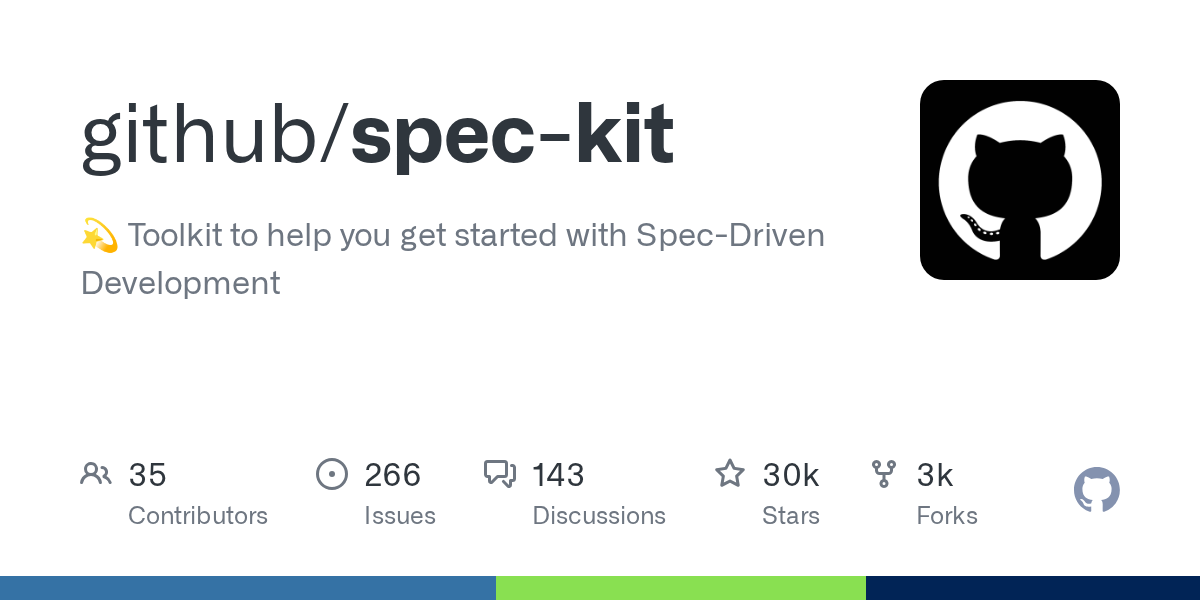Getting Started with GitHub Spec-Kit
Learn how to get started with GitHub Spec-Kit, a tool for specification-driven development that helps teams build better software through structured workflows.

Getting Started with GitHub Spec-Kit
In the ever-evolving landscape of software development, tools that enhance collaboration, clarity, and efficiency are invaluable. GitHub Spec-Kit emerges as a powerful ally for teams aiming to adopt specification-driven development. This post will guide you through the essentials of Spec-Kit, its benefits, the structured workflow it promotes, and a glimpse into its future potential.
What is SpecKit?
GitHub Spec-Kit is a specification-driven development tool integrated into GitHub that helps teams create, manage, and implement software specifications collaboratively. It transforms the way developers approach project planning by emphasizing clear, actionable specifications before diving into code. Spec-Kit provides a structured framework for defining requirements, breaking them down into manageable tasks, and tracking progress through a two-phase workflow.
At its core, Spec-Kit acts as a bridge between high-level project ideas and concrete implementation, ensuring that every feature is well-defined and aligned with stakeholder expectations.
Why Should Developers Care?
Specification-driven development addresses common pain points in software projects:
- Reduces Miscommunication: Clear specifications minimize misunderstandings between developers, designers, and stakeholders.
- Improves Quality: Well-defined requirements lead to more robust implementations and fewer bugs.
- Enhances Collaboration: The tool fosters better teamwork by providing a shared language and process for project planning.
- Accelerates Delivery: Structured workflows help teams move faster from concept to deployment.
- Scales with Teams: Spec-Kit works for small teams and large organizations alike, adapting to different project sizes and complexities.
For developers, Spec-Kit means less time spent on clarifying requirements and more time building high-quality software. It's particularly beneficial for complex projects where requirements are prone to change or where multiple stakeholders are involved.
The Development Workflow
Spec-Kit's workflow is divided into two main phases, each with distinct stages that guide teams from initial concept to final implementation.
Phase 1: Foundation
This phase focuses on establishing a solid groundwork for the project.
Constitution
The constitution stage involves defining the project's scope, objectives, and key stakeholders. Teams create a project charter that outlines:
- Project goals and success criteria
- Key deliverables and milestones
- Stakeholder roles and responsibilities
- High-level constraints and assumptions
This stage ensures everyone has a shared understanding of what the project aims to achieve.
Specification
Here, teams break down the project into detailed specifications. Each specification includes:
- Functional requirements
- Non-functional requirements (performance, security, scalability)
- User stories or use cases
- Acceptance criteria
- Dependencies and risks
Spec-Kit provides templates and collaborative editing tools to make this process efficient and inclusive.
Clarification
The clarification stage involves iterative refinement of the specifications. Teams conduct reviews, gather feedback from stakeholders, and resolve ambiguities. This stage often includes:
- Specification reviews and walkthroughs
- Q&A sessions with stakeholders
- Prototype or mockup creation for complex features
- Risk assessment and mitigation planning
Phase 2: Execution
With a solid foundation in place, teams move into the implementation phase.
Planning
In this stage, teams create detailed implementation plans based on the approved specifications. This includes:
- Breaking specifications into actionable tasks
- Estimating effort and timelines
- Assigning responsibilities
- Identifying dependencies between tasks
- Creating sprint or iteration plans
Tasks
Teams use Spec-Kit's task management features to organize and track work. Each task is linked to specific specifications and includes:
- Detailed descriptions
- Acceptance criteria
- Estimated effort
- Assigned team members
- Progress tracking
Implementation
The final stage involves actual code development, testing, and deployment. Spec-Kit integrates with GitHub's pull requests and issues, allowing teams to:
- Link code changes to specific tasks and specifications
- Track implementation progress
- Conduct code reviews with specification context
- Ensure all acceptance criteria are met before completion
The Future of Spec Driven Development
As software development continues to evolve, specification-driven approaches like Spec-Kit are poised for significant growth. Over the next year, I anticipate several developments:
- AI Integration: Spec-Kit could incorporate AI-powered tools for generating initial specifications from natural language descriptions or analyzing existing codebases to suggest improvements.
- Enhanced Collaboration Features: Expect more robust real-time collaboration tools, including video conferencing integration and advanced commenting systems.
- Industry-Specific Templates: The platform might expand to include specialized templates for domains like healthcare, finance, and IoT development.
- Metrics and Analytics: Advanced reporting features could provide insights into team productivity, specification quality, and project success rates.
- Integration Ecosystem: Broader integration with popular development tools, project management platforms, and CI/CD pipelines.
The growth of Spec-Kit could democratize specification-driven development, making it accessible to smaller teams and individual developers. As remote work becomes more prevalent, tools that facilitate clear communication and structured processes will become increasingly valuable.
In conclusion, GitHub Spec-Kit represents a significant step forward in how we approach software development. By emphasizing clear specifications and structured workflows, it helps teams build better software more efficiently. Whether you're working on a small project or managing a large-scale enterprise application, Spec-Kit provides the tools and processes needed to succeed in today's fast-paced development environment.